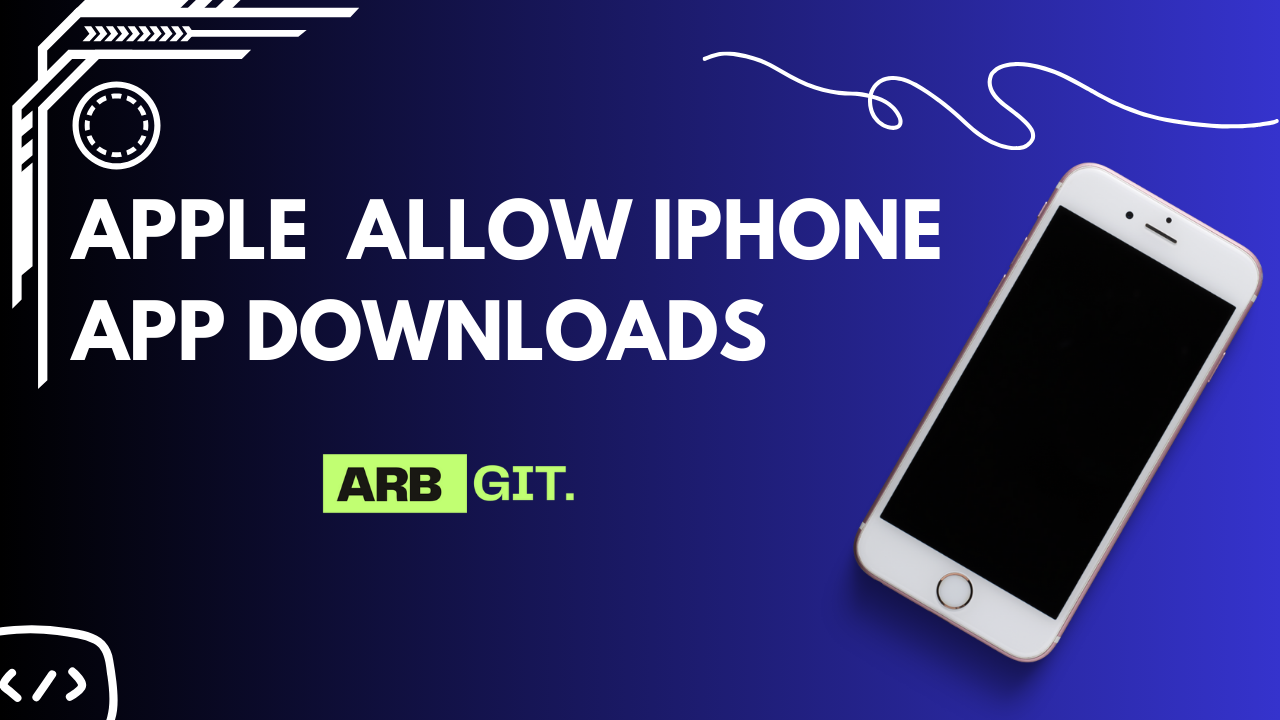Apple iPhone app downloads from websites in Europe

Apple’s Decision on iPhone App Downloads in Europe
Apple’s recent decision to allow iPhone app downloads from websites in Europe marks a significant policy change in the app distribution landscape. This move allows users to directly download apps from websites, bypassing the traditional app store. While it opens up new distribution channels for iPhone users, it also raises concerns about privacy and security. Regulatory responses to Apple’s decision and legal considerations surrounding direct app downloads will be crucial in shaping the future of app distribution. Additionally, this decision positions Apple strategically in the market, especially when compared to Android app download policies in Europe. Overall, this move signifies Apple’s adaptability and sets the stage for potential developments in app distribution.
Apple’s Policy Change on iPhone App Downloads
In a significant policy change, Apple has decided to allow iPhone users in Europe to download apps directly from websites, bypassing the traditional app store. This decision opens up new distribution channels for users and provides them with greater flexibility and choice in accessing apps. It also marks a departure from Apple’s previous approach of solely relying on the App Store for app downloads. By allowing direct app downloads, Apple is adapting to the changing needs and preferences of users in Europe, while also positioning itself strategically in the market. This move sets the stage for potential developments and innovations in app distribution.
Impact of Apple Allowing App Downloads from Websites
The decision by Apple to allow iPhone users in Europe to download apps directly from websites has significant implications for the app distribution landscape. This move opens up new distribution channels and provides users with greater flexibility and choice in accessing apps. It also has an impact on app developers and third-party app stores, as they will need to adapt to the changing preferences of users. Furthermore, this decision may also lead to regulatory responses and discussions around app store regulations. Overall, Apple’s policy change signals a shift in the market and sets the stage for potential developments and innovations in app distribution.
Privacy and Security Concerns
When it comes to allowing iPhone app downloads directly from websites, there are valid concerns about privacy and security. Users may question the safety of downloading apps from sources other than the trusted Apple App Store. There is a risk of downloading malicious software or exposing personal data to unauthorized access. To address these concerns, it is crucial for Apple and app developers to take stringent measures to ensure the security of downloads from websites. This includes implementing robust encryption protocols, conducting thorough security checks, and providing clear guidelines on safe downloading practices. By prioritizing user privacy and security, Apple can maintain trust in its app ecosystem.
Data Security Measures for App Downloads from Websites

To address privacy and security concerns, Apple and app developers must implement stringent measures for app downloads from websites. These measures may include robust encryption protocols to protect data during transmission and storage. Thorough security checks, including malware scanning and code auditing, should be conducted before allowing apps to be downloaded from websites. Additionally, clear guidelines should be provided to users on safe downloading practices, such as verifying the authenticity of the website and avoiding suspicious links. By implementing these data security measures, Apple can ensure the safety and integrity of app downloads from websites.
User Privacy Implications of Direct App Downloads
Direct app downloads from websites can raise privacy concerns for users. When downloading apps from websites, users may be required to provide personal information such as their name, email address, or even payment details. There is a risk that this data could be mishandled or compromised, leading to potential privacy breaches. Moreover, websites may not always have the same level of security and privacy measures as official app stores. Users should exercise caution and only download apps from trusted sources to protect their personal information from unauthorized access and potential misuse.
Changing App Distribution Landscape
The decision by Apple to allow iPhone app downloads from websites in Europe has the potential to significantly impact the app distribution landscape. With this policy change, there will likely be a shift in app distribution channels for iPhone users. While the App Store remains the primary source for app downloads, users now have the option to directly download apps from websites. This opens up opportunities for app developers to explore alternative distribution avenues and potentially reach a wider audience. Furthermore, third-party app stores may also experience influences as users have more choices for obtaining apps. This change in app distribution could lead to a more competitive landscape and foster innovation in the industry.
Shift in App Distribution Channels for iPhone Users
With Apple’s decision to allow iPhone app downloads from websites in Europe, there is likely to be a significant shift in app distribution channels for iPhone users. While the App Store remains the primary source for app downloads, users now have the option to directly download apps from websites. This opens up opportunities for app developers to explore alternative distribution avenues and potentially reach a wider audience. It also introduces competition to the app distribution landscape, as users now have more choices for obtaining apps. This shift in app distribution channels could lead to increased innovation and a more diverse range of apps available to iPhone users.
Influences on App Developers and Third-Party App Stores
The decision by Apple to allow iPhone app downloads from websites in Europe will have a significant influence on app developers and third-party app stores. App developers will now have the opportunity to explore alternative distribution channels and reach a wider audience outside of the traditional App Store. This could lead to increased competition among app developers, as they compete for users’ attention and downloads. Additionally, third-party app stores may see a rise in popularity, as users now have more choices for obtaining apps. This shift in distribution channels will likely encourage innovation and a more diverse range of apps available to iPhone users.
Implications for App Store Regulations
The decision by Apple to allow iPhone app downloads from websites in Europe has significant implications for app store regulations. This policy change could potentially lead to a reassessment of existing regulations surrounding app distribution and control. Regulators may need to revisit and potentially revise their guidelines to keep up with the evolving app distribution landscape. Additionally, this move may also prompt regulators to consider the importance of promoting competition and ensuring a level playing field for all app developers, including those outside of the traditional App Store. As a result, we may see regulatory changes aimed at creating a more open and competitive app ecosystem.
Regulatory Response to Apple’s Decision in Europe
Regulatory bodies in Europe are likely to closely monitor and respond to Apple’s decision to allow iPhone app downloads from websites. This move could prompt regulators to review and potentially update existing regulations surrounding app distribution and control. The aim would be to ensure fair competition and protect consumer interests in an evolving app distribution landscape. Regulators may also assess the need for stronger data protection measures and privacy guidelines for direct app downloads from websites. This decision by Apple has the potential to influence future app store regulations and foster a more competitive and consumer-centric app ecosystem.
Legal Considerations for Direct App Downloads
When it comes to direct app downloads from websites, there are several legal considerations that need to be taken into account. App developers and website owners must ensure that they are complying with intellectual property laws and licensing agreements when providing access to their apps. Additionally, they need to adhere to regulations related to data protection and privacy. This includes obtaining appropriate consent from users for collecting and processing their personal information. It is also important to have clear terms and conditions in place to protect both the app provider and the user. By addressing these legal considerations, app developers and website owners can minimize potential legal risks and ensure a transparent and secure app distribution process.
Apple’s Competitive Positioning
Apple’s decision to allow iPhone app downloads from websites in Europe has significant implications for its competitive positioning in the market. By enabling direct app downloads, Apple is addressing a longstanding restriction that has favored its main competitor, Android. This move levels the playing field and allows iPhone users more freedom and choice when it comes to app downloads. By offering a more flexible app distribution model, Apple is positioning itself as a more user-centric and innovative company, which could potentially attract more consumers to its devices and ecosystem. This decision also puts pressure on Android to reassess its own app download policies and consider making similar changes to stay competitive in the market.
Comparison with Android App Download Policies in Europe
In comparing Apple’s decision to allow iPhone app downloads from websites in Europe with Android’s app download policies, it is evident that Apple is taking a more user-centric approach. While Apple’s change provides iPhone users with more freedom and choice, Android still heavily relies on its official Google Play Store for app downloads. This restriction has given Apple an advantage in terms of flexibility and innovation. However, with Apple’s policy change, Android may face pressure to reassess its own app download policies and consider similar changes to remain competitive in the market. This shift could lead to a more dynamic and diversified app distribution landscape in Europe.
Strategic Impact on Apple’s Market Position
The decision to allow iPhone app downloads from websites in Europe has significant strategic implications for Apple’s market position. By providing users with more choices and the ability to download apps directly from websites, Apple is strengthening its competitive advantage over Android devices. This move aligns with Apple’s consumer-centric approach and enhances its reputation as a company that prioritizes user freedom and innovation. Additionally, by expanding app distribution channels, Apple is likely to attract more developers and stimulate the growth of third-party app stores. This strategic positioning puts Apple in a favorable position to maintain its market share and stay ahead of its competitors.
Conclusion
In conclusion, Apple’s decision to allow iPhone app downloads from websites in Europe is a strategic move that strengthens its market position. By expanding app distribution channels, Apple enhances user choice and convenience while attracting more developers to its platform. This decision aligns with Apple’s reputation as a consumer-centric company and reinforces its competitive advantage over Android devices. However, concerns regarding privacy and data security should be addressed to ensure user trust and protection. As the app distribution landscape continues to evolve, it will be interesting to see how this decision shapes the future of app distribution and regulations.
Analysis of Apple’s Move to Allow Website App Downloads
Apple’s decision to allow iPhone app downloads from websites in Europe is a strategic move that aims to enhance user convenience and expand app distribution channels. By allowing direct downloads from websites, Apple is tapping into a new avenue for users to access apps, thereby increasing user choice and providing more opportunities for developers. This move aligns with Apple’s customer-centric approach and reinforces its competitive advantage over Android devices. As the app distribution landscape evolves, it will be interesting to see how this decision shapes the future of app distribution and regulations.
Future Trends and Potential Developments in App Distribution
As the app distribution landscape continues to evolve, several future trends and potential developments can be anticipated. One such trend is the increased adoption of web-based app distribution platforms, similar to Apple’s move to allow iPhone app downloads from websites. This may lead to a shift in the dominance of app stores, with more users and developers opting for alternative distribution channels. Additionally, the rise of progressive web apps (PWAs) could gain traction, allowing users to access and use apps directly from their browsers without the need for traditional app downloads. These developments may further challenge the existing app distribution regulations and spark new debates on fairness and competition in the industry. Overall, the future of app distribution seems to be moving towards increased flexibility and choice for both users and developers.




